Huawei P40
$762 | 68000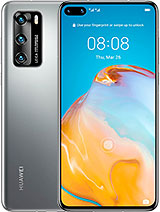
- 6.1" 1080x2340 pixels
- 50MP 2160p
- 6/8GB RAM HiSilicon Kirin 990 5G
- 3800mAh Li-Po
Phone Finder
- Acer alcatel Allview Amazon Amoi Apple Archos Asus AT&T Benefon BenQ BenQ-Siemens Bird BlackBerry Blackview BLU Bosch BQ Casio Cat Celkon Chea Coolpad Cubot Dell Doogee Emporia Energizer Ericsson Eten Fairphone Fujitsu Siemens Garmin-Asus Gigabyte Gionee Google Haier HMD Honor HP HTC Huawei i-mate i-mobile Icemobile Infinix Innostream iNQ Intex itel Jolla Karbonn Kyocera Lava LeEco Lenovo LG Maxon Maxwest Meizu Micromax Microsoft Mitac Mitsubishi Modu Motorola MWg NEC Neonode NIU Nokia Nothing Nvidia O2 OnePlus Oppo Orange Oscal Oukitel Palm Panasonic Pantech Parla Philips Plum Posh Prestigio QMobile Qtek Razer Realme Sagem Samsung Sendo Sewon Sharp Siemens Sonim Sony Sony Ericsson Spice T-Mobile TCL Tecno Tel.Me. Telit Thuraya Toshiba Ulefone Umidigi Unnecto Vertu verykool vivo VK Mobile Vodafone Wiko WND XCute Xiaomi XOLO Yezz Yota YU ZTE
Huawei P40 Summary
Huawei P40 is in the Huawei P40 series that launched in April 2020. The lineup includes Huawei P40 Lite, P40, P40 Pro, and P40 Pro Plus. Except for the P40 Lite, the other three phones in the series are quite similar to each other, aside from several upgrades in more-premium models. Well, there is one thing we have to tell you before going into more details and that is the lack of Google Mobile Services. As you may know, the U.S government has banned US companies to do business with Huawei, and hence, Google must provoke Huawei’s Android license. That means new smartphones from Huawei after the ban won’t be pre-installed with Google’s apps like Google Play Store, YouTube, Google Search, Chrome, and more.
Overall, the P40, P40 Pro, and P40 Pro Plus are powered by a Kirin 990 5G chipset and support 5G connectivity. While the vanilla model is available in 6/8GB RAM and 128/256GB of storage, the two top-end models pack 8GB RAM and up to 512GB storage. However, they differ in the camera, battery, and display departments.
The price of the P40, P40 Pro, and P40 Pro Plus are as follows:
- Huawei P40 (8GB RAM / 128GB storage): Rs. 66,000)
- Huawei P40 Pro (8GB / 256GB): Rs. 82,500
- Huawei P40 Pro + (8GB / 512GB): Rs. 1,15,500)
The P40 comes with a 6.1-inch OLED display that supports up to FHD+ (2,340 x 1,080p) resolution. The screen covers 86.3% of the front panel and has a 19.5:9 aspect ratio, which is quite common for a flagship smartphone at the time. As for design, Huawei uses the punch-hole design on the series instead of the water-drop notch style like it did on the P30 series.
One big downside of this phone is its refresh rate. While several other phone makers have gone for 90Hz and higher refresh rate on their phones’ display, Huawei still decided to use the traditional 60Hz one and that is a bit disappointing for a flagship device. If you want a 90Hz display, you can choose the Pro version at a higher price. As for gaming experience, with a 90Hz display, the P40 is certainly not as good as other flagships in this department such as OnePlus 8 (90Hz) and Galaxy S20 (120Hz).
Moving to the performance aspect, the Huawei P40 uses Kirin 990 5G chipset, which is the brand’s latest and most powerful one at the moment. The chipset is built on 7nm+ process with two Cortex-A76 cores clocked at 2.86GHz, two Cortex-A76 cores clocked at 2.36GHz, and four Cortex-A55 cores clocked at 1.95Ghz. It is paired with a Mali-G76 MP16 GPU. Overall, Huawei’s most powerful chipset is not as powerful as its Qualcomm’s counterpart, the Snapdragon 865 SoC. It is most comparable to the Snapdragon 855 Plus chipset that was launched in July 2019. So if you are searching for smartphones that offer the highest performance, you are looking at the wrong place. We would recommend iPhone 11 series with Apple’s A13 SoC or Android flagships with the Snapdragon 865 SoC. However, if you want a great all-around smartphone, the Huawei P40 is still at the top of the list.
As for memory configurations, you can purchase the phone in three variants , 6GB RAM + 128GB storage, 8GB RAM + 128GB storage, and 8GB RAM + 256GB storage. All three models have super-fast UFS 3.0 storage. In case you don’t know, UFS 3.0 is the latest storage standard designed for digital cameras and smartphones. UFS (Universal Flash Storage) offers write and read speeds that are much faster than eMMC while keeping the same power consumption figures. It is like a mobile version of SSD for smartphones.
UFS 3.0 offers a significant boost in performance compared to UFS 2.1. While the former offers a read speed of 2,100MB/s and write speed of 410MB/s, the latter write and read speeds are 850MB/s and 260MB/s, respectively. Pitting it against eMMC 5.1 (used on Pixel 3a series), UFS 3.0 delivers 8.5x increase in sequential reads and 6x increase in random read.
Moving to the battery department, it is packed with a 3,800 mAh battery, which is slightly increased from the 3,650mAh unit on the Huawei P30. It only supports 22.5W fast charging solution. In comparison, the P40 Pro supports 40W fast charging, 27W fast wireless charging, and 27W reverse wireless charging. Well, 22.5W charging is not the fastest in the world, it can still replenish the 3,800mAh battery cell of the P40 from 0 to 60 percent in 30 minutes while it can reach 90 percent in an hour of charging. Regarding the lack of wireless and reverse charging technologies, they are interesting features to have, but they are not really that necessary in many cases.
As for battery life, the handset can last up to 13 hours on web surfing or over 18 hours on playing videos. If you are worrying that this phone might heat up during intensive gaming sessions, it depends on the game titles you are planning to play. The phone will get quite hot just like its rivals if you play demanding games.
The final aspect we want to talk about is the cameras. On the front, it gets a single 32MP camera for selfies and video chats. The camera is capable of recording 4K video at 30/60fps or 1080p video at 30/60fps. Around the back, there are a total of three cameras. The first one is a 50MP sensor with an f/1.9 lens, omnidirectional PDAF, OIS. The second unit is an 8MP telephoto lens that has an aperture of f/2.4, PDAF, OIS, and 3x optical zoom. The last one is a 16MP ultra-wide-angle camera with an f/2.2 aperture.
Overall, the image quality that the Huawei P40 delivers is very good. It offers excellent image quality across all the cameras in both day and night. Its front-facing camera also captures good selfies and great selfie videos.
Huawei P40 Full Specifications
- Dollas $762
- Rupee ₹68000
- Technology GSM / HSPA / LTE / 5G
- 2G bands GSM 850 / 900 / 1800 / 1900 - SIM 1 & SIM 2
- 3G bands HSDPA 800 / 850 / 900 / 1700(AWS) / 1900 / 2100
- 4G bands 1, 2, 3, 4, 5, 6, 7, 8, 9, 12, 17, 18, 19, 20, 26, 28, 32, 34, 38, 39, 40, 41
- 5G bands 1, 3, 28, 38, 41, 77, 78, 79 SA/NSA
- Speed HSPA 42.2/5.76 Mbps, LTE-A, 5G
- Announced 2020, March 26
- Status Available. Released 2020, April 07
- Dimensions 148.9 x 71.1 x 8.5 mm (5.86 x 2.80 x 0.33 in)
- Weight 175 g (6.17 oz)
- SIM Single SIM (Nano-SIM/eSIM) or Hybrid Dual SIM (Nano-SIM, dual stand-by)
- IP53 dust and splash protection
- Type OLED capacitive touchscreen, 16M colors
- Size 6.1 inches, 91.3 cm2 (~86.3% screen-to-body ratio)
- Resolution 1080 x 2340 pixels, 19.5:9 ratio (~422 ppi density)
- OS Android 10; EMUI 10.1, no Google Play Services
- Chipset HiSilicon Kirin 990 5G (7 nm+)
- CPU Octa-core (2x2.86 GHz Cortex-A76 & 2x2.36 GHz Cortex-A76 & 4x1.95 GHz Cortex-A55)
- GPU Mali-G76 MP16
- Card slot NM (Nano Memory), up to 256GB (uses shared SIM slot)
- Internal 128GB 6GB RAM, 128GB 8GB RAM, 256GB 8GB RAM
- UFS 3.0
- Modules 50 MP, f/1.9, 23mm (wide), 1/1.28", 2.44µm, omnidirectional PDAF, OIS 8 MP, f/2.4, 80mm (telephoto), PDAF, OIS, 3x optical zoom 16 MP, f/2.2, 17mm (ultrawide), AF
- Features Leica optics, LED flash, panorama, HDR
- Video 2160p@30/60fps, 1080p@30/60fps, 720p@960fps; gyro-EIS
- Modules 32 MP, f/2.0, 26mm (wide), 1/2.8", 0.8µm IR TOF 3D, (biometrics sensor only)
- Features HDR
- Video 2160p@30/60fps, 1080p@30/60fps
- Loudspeaker Yes
- 3.5mm jack No
- WLAN Wi-Fi 802.11 a/b/g/n/ac/ax, dual-band, Wi-Fi Direct, hotspot
- Bluetooth 5.1, A2DP, LE
- GPS Yes, with dual-band A-GPS, GLONASS, BDS, GALILEO, QZSS, NavIC
- NFC Yes
- Radio No
- USB 3.1, Type-C 1.0 reversible connector, USB On-The-Go
- Sensors Infrared face recognition, fingerprint (under display, optical), accelerometer, gyro, proximity, compass, color spectrum
- Non-removable Li-Po 3800 mAh battery
- Charging Fast charging 22.5W
- Colors Silver Frost, Blush Gold, Deep Sea Blue, Ice White, Black
- Models ANA-AN00, ANA-TN00
- Performance AnTuTu: 486583 (v8) GeekBench: 12619 (v4.4), 3148 (v5.1) GFXBench: 37fps (ES 3.1 onscreen)
- Display Contrast ratio: Infinite (nominal)
- Camera Photo
- Loudspeaker -28.9 LUFS (Average)
- Battery life Endurance rating 89h
Huawei P40 News

Mobile - Apr 11, 2020
15 Most Exciting Smartphones In The First Half Of 2020 That're Worth The Wait
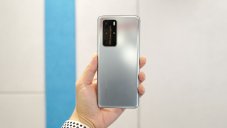
Mobile - Apr 02, 2020
Huawei P40 Pro Tops The Chart In DxOMark Rankings, Far Ahead Of Rivals
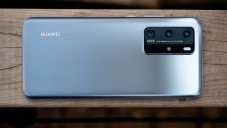
Mobile - Mar 26, 2020
Huawei P40, P40 Pro, P40 Pro+ Launched: Top-Notch Cameras & Powerful Performance
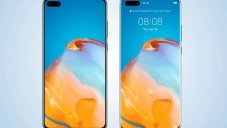
Mobile - Mar 20, 2020
Huawei P40 & Huawei P40 Pro Design Revealed In New Leaked Photos
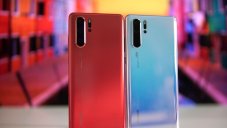
Mobile - Mar 17, 2020











